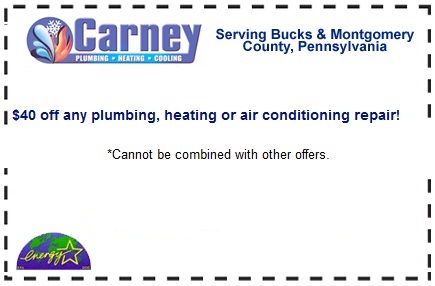There is no question that Carney Plumbing, Heating & Cooling is a family business. Founded in 1976 by Kevin J. Carney and Diane Carney, the operations are now in the hands of sons Kevin and Ryan. We would like to introduce and congratulate a member of the extended Carney family. Matt Spinelli has been with us for over 5 years. Employees like Matt are the reason that we have been able to provide over three decades of excellence in service and commitment to customer service.
Matt, currently one of our dedicated HVAC service technicians, will be transitioning to a new role in sales. As a Carney Comfort Advisor Matt will be designing and selling the systems that we install. Matt’s knowledge of all aspects of plumbing and his history in the industry will serve him well in this new role. Matt continues to grow in the field and continue his education whenever possible. He attends many HVAC and plumbing related classes every year, and especially enjoys learning about the green products available and the new advances in technology that improve system efficiency and home comfort.
Fresh out of high school Matt planned on going to college, then he got a job through a family friend working as a helper / driver for an HVAC company. He ended up loving the field so much that he chose to pursue this as his career. Matt continues to find it rewarding to restore comfort in the homes of the clients we serve by repairing their heating and cooling systems. Here at Carney we call Matt “The Scientist”; whenever we encounter a strange or unusual problem we send Matt to get to the bottom of things. In his free time Matt enjoys spending time with his family, including his wife and two young daughters.
Congratulations and thank you to Matt Spinelli from the whole Carney Plumbing, Heating & Cooling family!


